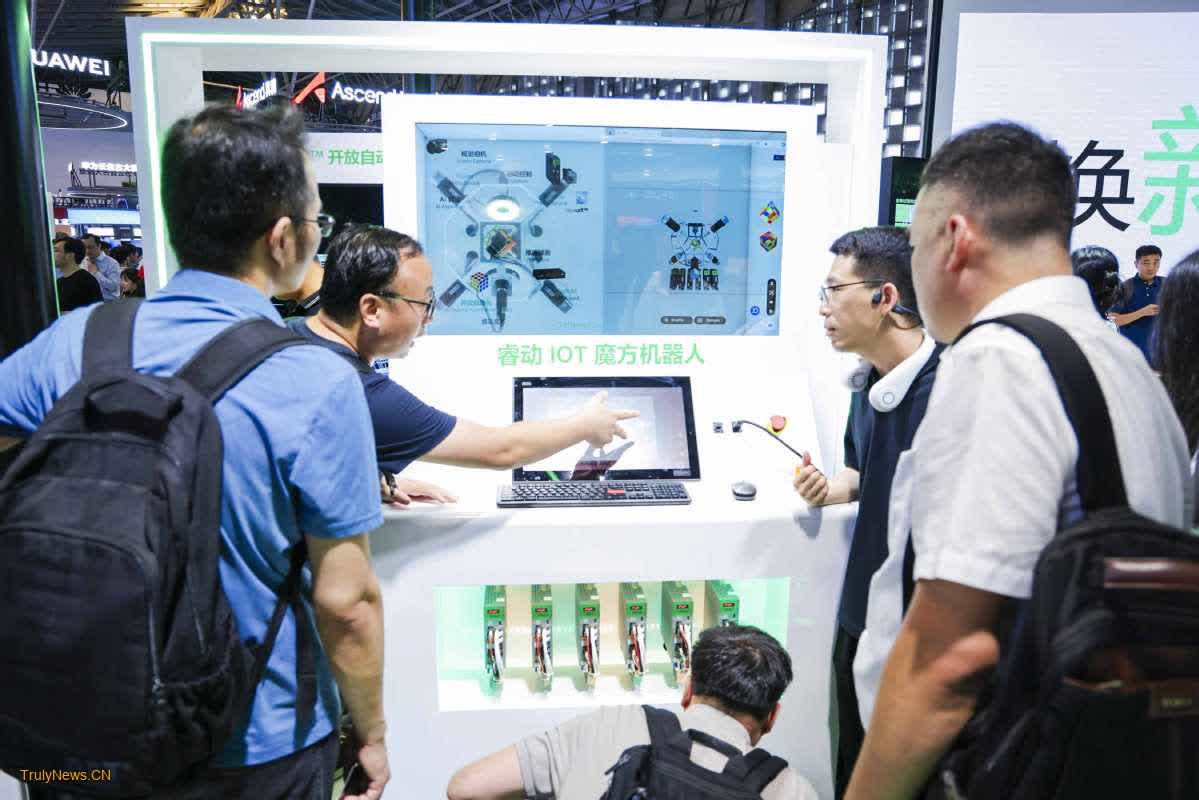
Most companies may be using artificial intelligence to improve efficiency by replacing repetitive work, but some, including those in China, are using it to optimize energy consumption, said Peter Weckesser, executive vice-president and chief digital officer of Schneider Electric.
Weckesser made the comments during his recent visit to Shanghai to attend the four-day 2024 World AI Conference.
Weckesser said AI’s value lies in its applicability to industrial scenarios, helping improve productivity efficiency and address the pressing issue of energy transition.
Demand for energy management can be seen in various industries in China, including automotive, steel, cement, glass, water, foods and beverages and chemicals. Data centers, which are energy-intensive, and buildings, which account for 40 percent of the energy consumption globally, also need energy management, he said.
Schneider Electric’s latest financial results also reflect the surging market demand. In the first quarter of this year, its revenue reached 8.6 billion euros ($9.3 billion), up more than 5 percent year-on-year and setting an all-time high for the first quarter.
Sales revenue from energy management businesses grew by almost 9 percent year-on-year. Income generated by China’s energy management businesses was up in high single digits. Renewable power, transportation infrastructure projects, combined with energy management offers sold to power grids, buildings and manufacturing companies are the major boosters for Schneider Electric’s energy management business expansion in China, according to the company’s 2024 first quarter fiscal report.
But there is still much room of growth. Applied at scale, AI can largely improve energy consumption efficiency by collecting energy flow data and creating insights and analytics, said Weckesser.
Schneider Electric’s EcoStruxure AI module demonstrated at this year’s WAIC is one example. Providing proven AI foundation models and real application scenarios, the module can help industries like automobiles, foods and beverages, semiconductors and machinery to further improve their efficiency by 3 to 5 percent and lower yearly energy consumption by up to 10 percent.
Schneider Electric’s AI applications for its clients in China have been quite extensive. The company has used AI algorithms to provide intelligent control strategies for Budweiser’s production line in China to improve the filtration efficiency by 15 percent.
Based on AI algorithms and machine learning, Schneider Electric has been helping Bank of Dalian to optimize its control of the cold station in the computer room with a dynamic cooling capacity based on the real-time demand of IT load, saving 31 percent of energy costs.
According to Weckesser, there is reason to anticipate bigger AI-related changes. For example, in the trend of energy transition and “prosumer” (a person who both produces and consumes energy), industrial sites and buildings will all grow into micro-grids, according to Schneider Electric.
“This will be a huge playground for AI to not only help optimize these micro-grids internally but also optimize their interaction, making the network an important source of renewable green energy in the future,” he said.
Weckesser said China has been taking the lead worldwide in terms of use of 5G. This enables real-time collection and processing of data, which AI can provide.
Within one of Schneider Electric’s factories in Shanghai, 5G is used to communicate with mobile robots, integrating cameras for quality inspection.
“The rest of the world seems relatively conservative in the introduction of 5G into industrial or IoT (internet of things) environments. But China is moving faster than the rest of the world in deploying 5G in industrial applications and in factories,” he said.
shijing@trulynews.cn